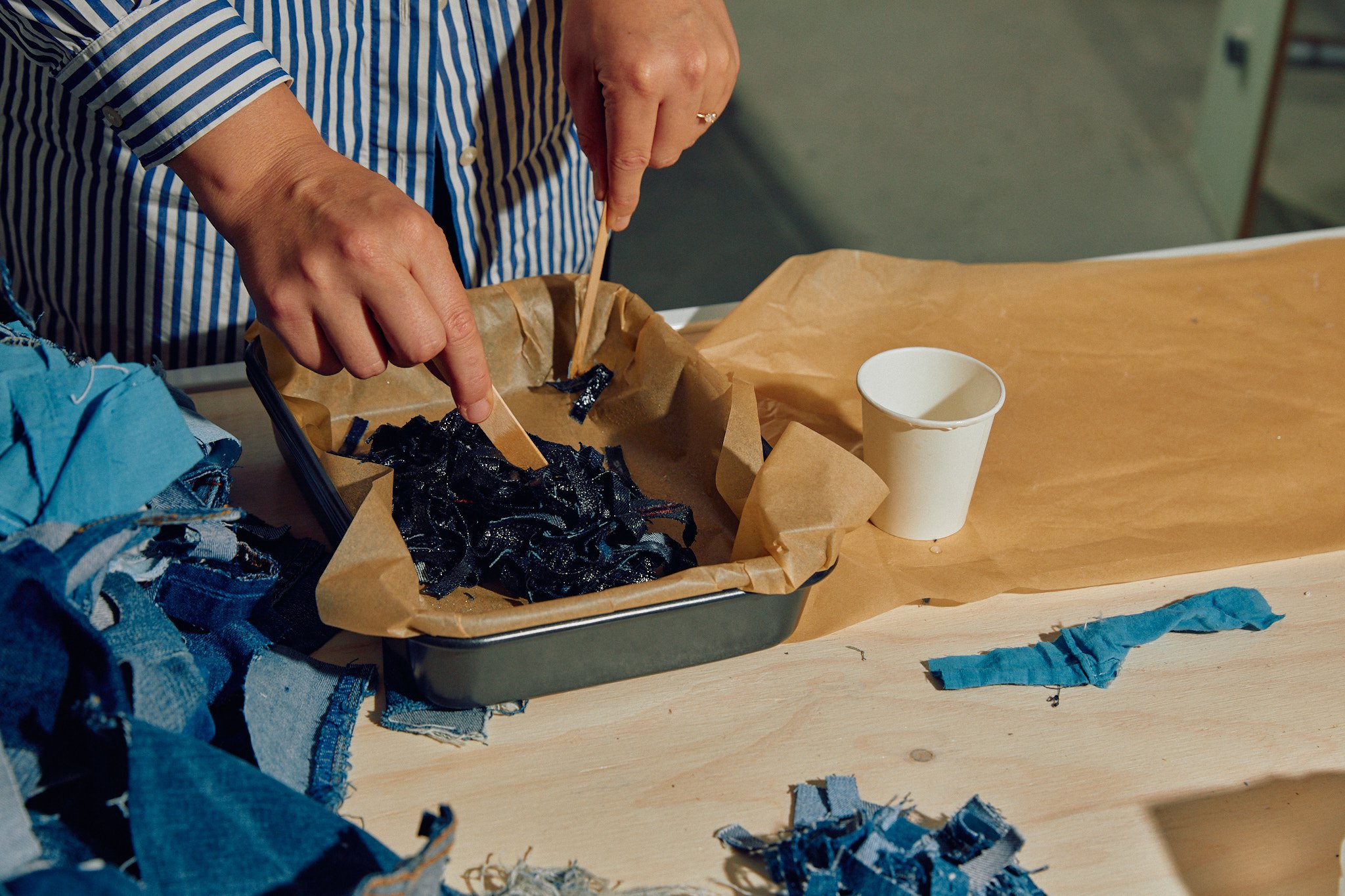
Craft Conversations
Ella Saddington of Cordon Salon searches for and exposes craft and design processes that may be undiscovered, forgotten or overlooked. Recent explorations focus on the uses and potential of waste materials. Working with left-over denim scraps from the ‘Future from Waste Lab’ project, her she is investigating how these remnants could be used as structural fibres to form functional wares such as lamps, side-tables and stools.
Can you tell us about you current area of research?
Pollution and waste generated by the fashion industry as a whole has been well documented and has become widely known. Many brands are beginning to implement changes in production, sourcing and recycling. However this is no where near enough to address the issues generated.
Currently I’m undertaking a residency at the Beta Project where I’m tasked with exploring working with waste materials. I’ve sourced the denim from one of the other residents who are reworking existing clothing into new products as part of the a project called 'Future from Waste Lab’. Most of the original garment is used in their up-cycling/reworking process however there is some small material pieces that are leftover and cannot be used. I’ve been exploring what can be done with these remnants.
What is exciting about working with this material?
I’m excited about understanding the material and its potential applications. I’m also working with Biobased epoxy which contains 30% Biobased Content. Its a small step in the right direction but not nearly big enough to make a significant impact from a sustainability point of view. The development of fully bio based resins and bio-degradable options are being widely explored, they are not yet market ready. However I’ve decided to explore elating the material mass to further reduce the epoxy content within the design.
What is the responsibility of the maker and their approach to material practice?
I believe it is our duty as designers and craftspeople to revaluate and re-approach our work in ways that promote sustainability within our craft. Innovation does not exclusively follow a linear path. Sometimes we need to go back to old or outdated ways of working in order to forge a new path of innovation.
Why do you think we need to reflect and revaluate our approach to material in craft and design practice?
Innovation can be attributed to constant and incremental change through the reevaluation of process, material and form. Innovation for environmental benefit can be explored alongside innovation for commercial benefit.